.png)
The Role of BIM in Construction Document Management
From design to handover, construction projects generate countless documents that must be accurate, up-to-date, and accessible. This blog explores how Building Information Modeling (BIM) revolutionizes document management in construction and how CUBE’s integrated platform empowers teams to work faster, smarter, and with greater confidence.



In the construction world, documents are everywhere drawings, RFIs, BOQs, site instructions, approvals, change orders, and more. Keeping these organized, traceable, and up-to-date is critical to project success.
Traditionally, this has been a challenge. Siloed tools, manual updates, and paper-based workflows result in version conflicts, delays, and miscommunication. As projects become larger and more complex, these inefficiencies only multiply.
That’s where Building Information Modeling (BIM) transforms the game, turning document chaos into coordinated control.
To support this transformation, platforms like CUBE offer an integrated environment that simplifies document management and enhances project collaboration across all stakeholders.
What Is BIM-based Document Management?
BIM isn’t just about 3D modeling, it’s a data-driven process that connects design, documentation, scheduling, and cost information within a shared digital environment. When integrated with a Document Management System (DMS), BIM enables teams to store, access, update, and track construction documents in context with the models and drawings too.
This means less confusion, better collaboration, and faster execution.
Why Construction Document Management Needs BIM
Managing construction documents without BIM can lead to:
- Outdated drawings circulating across teams
- Difficulty tracing approvals or changes
- Delayed responses to RFIs and submittals
- Compliance gaps and audit risks
- Limited visibility for remote or field teams - BIM streaming technology bridges the gap by providing real-time access to models and data, supporting field teams with context for permits, inspections, checklists, and 4D progress tracking through planned vs. actual simulations.
BIM addresses these by embedding documentation within the project’s lifecycle, making documents intelligent, interconnected, and contextually relevant.
Elevating Document Management with BIM - Powered by CUBE
Centralized Document Access
BIM is more than just a modeling tool, it’s a holistic process that brings together data, design, and construction workflows across the AECO industry. From early design to final handover, it enables seamless collaboration and informed decision-making. But for BIM to truly thrive, it needs a structured foundation to manage the vast ecosystem of project documents it generates.
That’s where a Common Data Environment (CDE) comes in.
CUBE offers a robust, unified platform to consolidate the entire spectrum of construction documentation from BOQs, RFIs, and submittals to drawings, mark-ups, and final as-builts. This centralized and searchable repository eliminates silos, improves traceability, and ensures that every stakeholder is working from the latest, most accurate version.
Explore how adopting CUBE’s Common Data Environment can amplify the value of BIM and unify your document workflows.
.png)
Tracking Model Changes with Revision History
A Common Data Environment ensures teams always work with the latest files while maintaining a full history of revisions and comments. BIM enables detailed change tracking at the model level, beyond simple file versioning. It highlights what elements were added, removed, or modified between versions, helping teams quickly identify design updates in context. These insights improve coordination across disciplines, reduce approval delays, and ensure all stakeholders are reviewing the most relevant changes without confusion.
CUBE auto-tracks every document update, logs who made the change and when, and maintains a full audit trail, reducing version errors and increasing accountability. Teams can also compare two versions of the same CAD and BIM files directly within the design viewer, now enhanced with a slider feature for more intuitive and precise visual comparison.
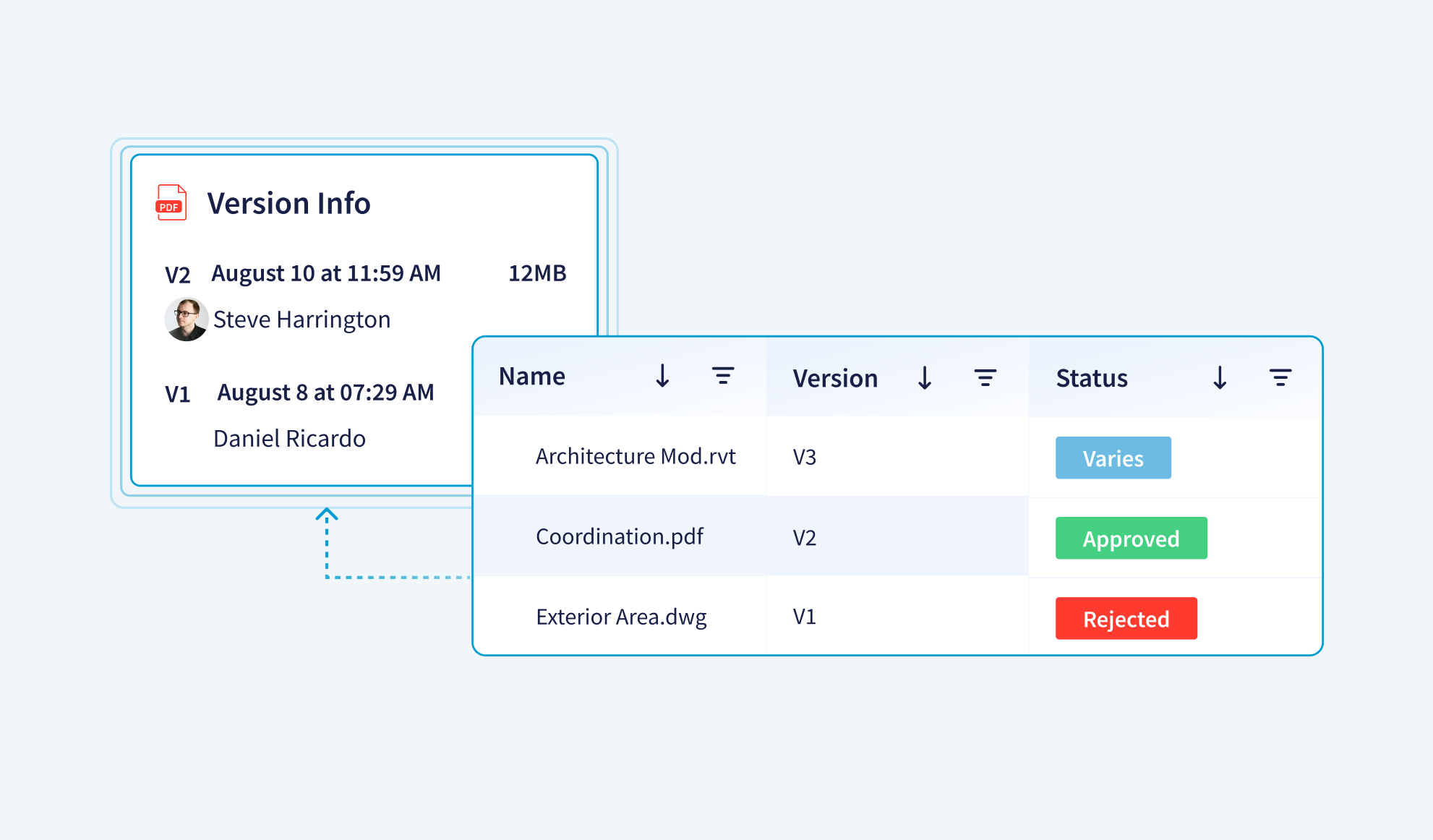
Faster Review & Approval Cycles
One of CUBE’s core strengths lies in its ability to centralize communication directly within the model environment. Instead of relying on scattered comments or disconnected email threads, teams can raise, assign, and track issues contextually, right within the 3D model. Markups, annotations, and comments are attached to specific elements, ensuring everyone sees exactly what needs attention, in full visual context.
This model-based issue tracking brings clarity, accountability, and traceability to the entire coordination process, whether it's identifying design clashes, requesting changes, or reviewing constructability concerns.
CUBE automates workflows for drawing reviews, approvals, and submittals, complete with role-based tasks, deadlines, and reminders. This keeps reviews moving and decisions on track.
Explore how Clash Tests, Issues and Reviews on CUBE can simplify coordination and accelerates approvals.
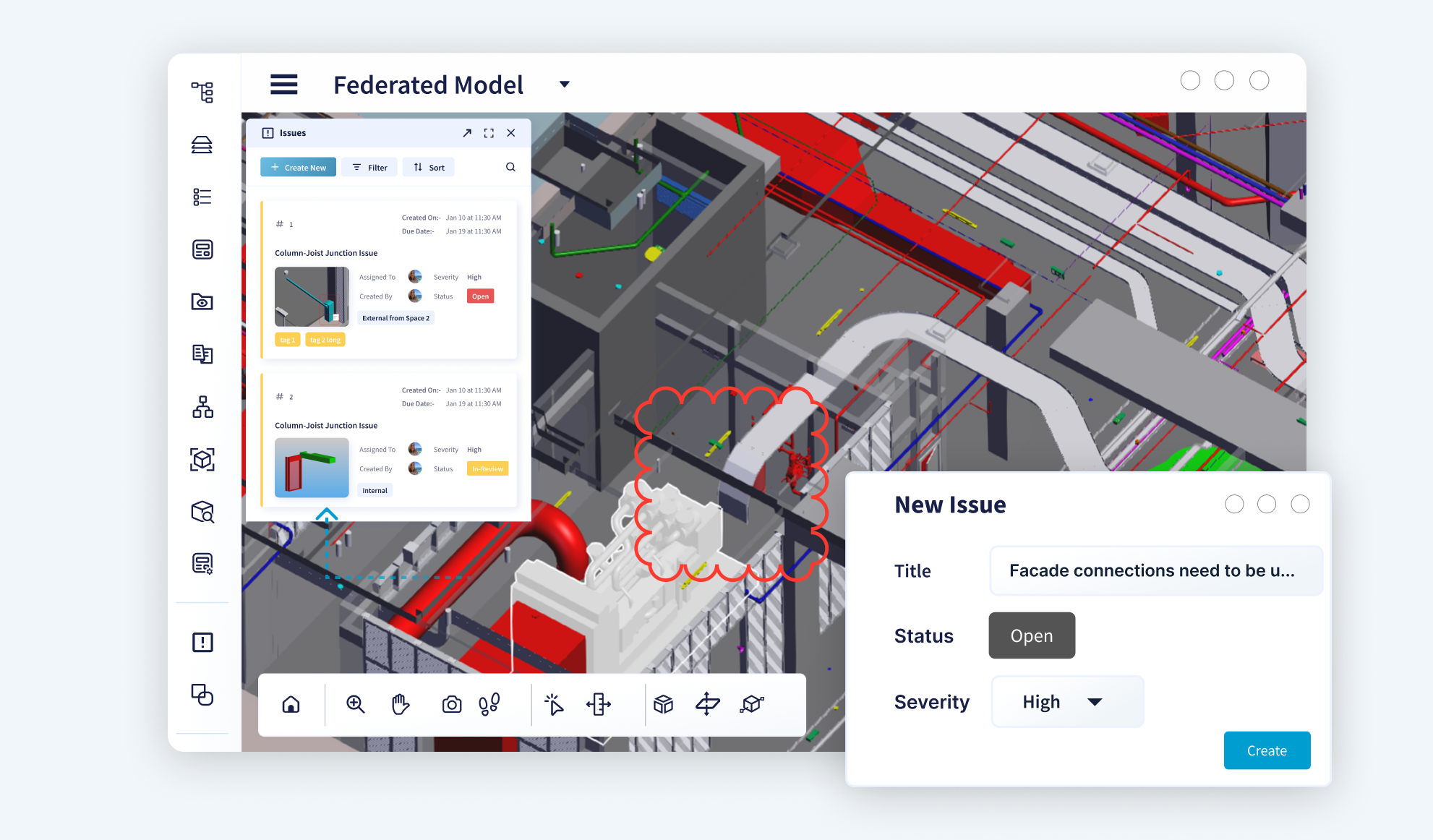
Visual Context with Model-Linked Features
With BIM, data can be associated with specific model elements, bringing visual clarity to project information and reducing guesswork.
Model elements can also be linked to quantity takeoffs for BOQs or tied to schedules for 4D construction sequencing, enabling deeper insights across phases. With CUBE, users can also attach files or images in various Forms and Issues, providing rich context for coordination.
Explore how it works and helps manage project timelines and costs better.
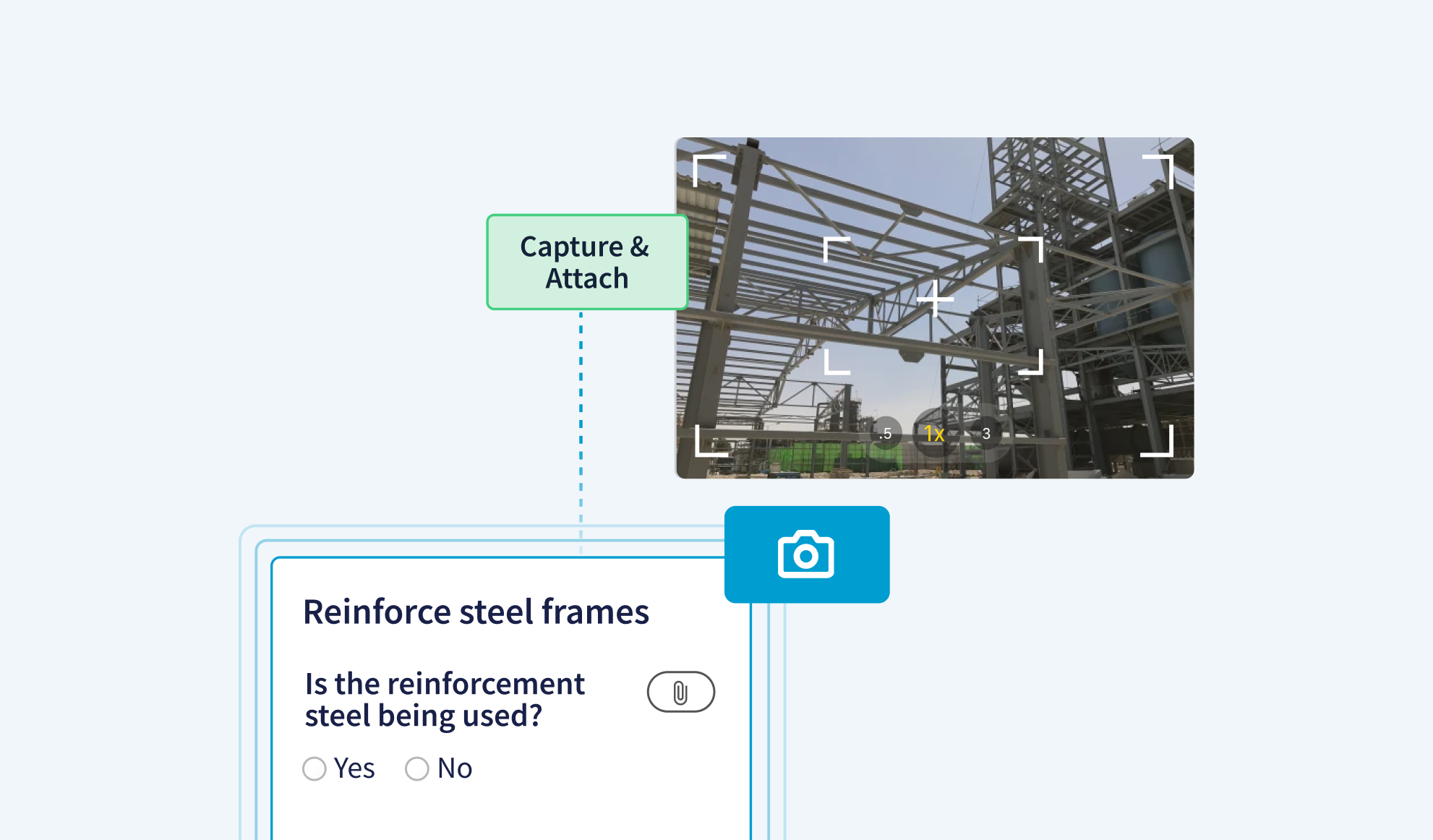
Intelligent Document Search & Filtering
BIM isn’t just about geometry, it’s about data. By tying rich metadata to model elements, BIM makes it possible to go beyond traditional document searches. Instead of browsing through endless folders, users can create queries in the model itself.
CUBE transforms BIM models into intelligent databases that can answer highly specific project queries. CUBE takes this further with advanced data banks and smart querying capabilities. Every document, drawing, and model element is indexed and tagged, so users can search by configurable rule-based searches.
See how CUBE enables advanced data management and makes every bit of BIM data actionable, while streamlining document control with centralized storage, version tracking, and real-time access across teams.
Compliance & Lifecycle Traceability
BIM ensures complete traceability across all phases of a project Design, Construction, and Operations and Maintenance (O&M) supporting audits, quality control, and long-term asset management.
- During the design stage, it helps capture design intent, approvals, and version histories with clarity and accountability.
- In the construction phase, it enables real-time tracking of on-site changes, quality inspections, and compliance documentation.
- Post-handover, in the O&M phase, BIM ensures that all as-built information, certificates, and maintenance data are readily accessible for efficient facility management.
CUBE supports this end-to-end visibility by maintaining detailed logs, approval trails, and linked compliance documents, ensuring you're always audit ready and handover compliant. By providing access to the latest information across the entire project lifecycle, CUBE empowers teams to shift from reactive to proactive risk management, catching potential issues early and driving smoother, more informed project delivery.
.png)
Role-Based Access & Document Permissions
When paired with a Common Data Environment (CDE), BIM becomes a single source of truth for all project documents. Model-linked updates, whether design changes, task assignments, or approvals, are instantly reflected in the CDE, ensuring every stakeholder has timely, role-based access to the information they need. This combination streamlines coordination, boosts accountability, and safeguards data across the project lifecycle.
CUBE offers role-based permission controls, allowing admins to define who can view, upload, approve, or comment on specific documents. Whether it's subcontractors needing limited access or clients needing read-only views, permissions can be customized for each stakeholder.
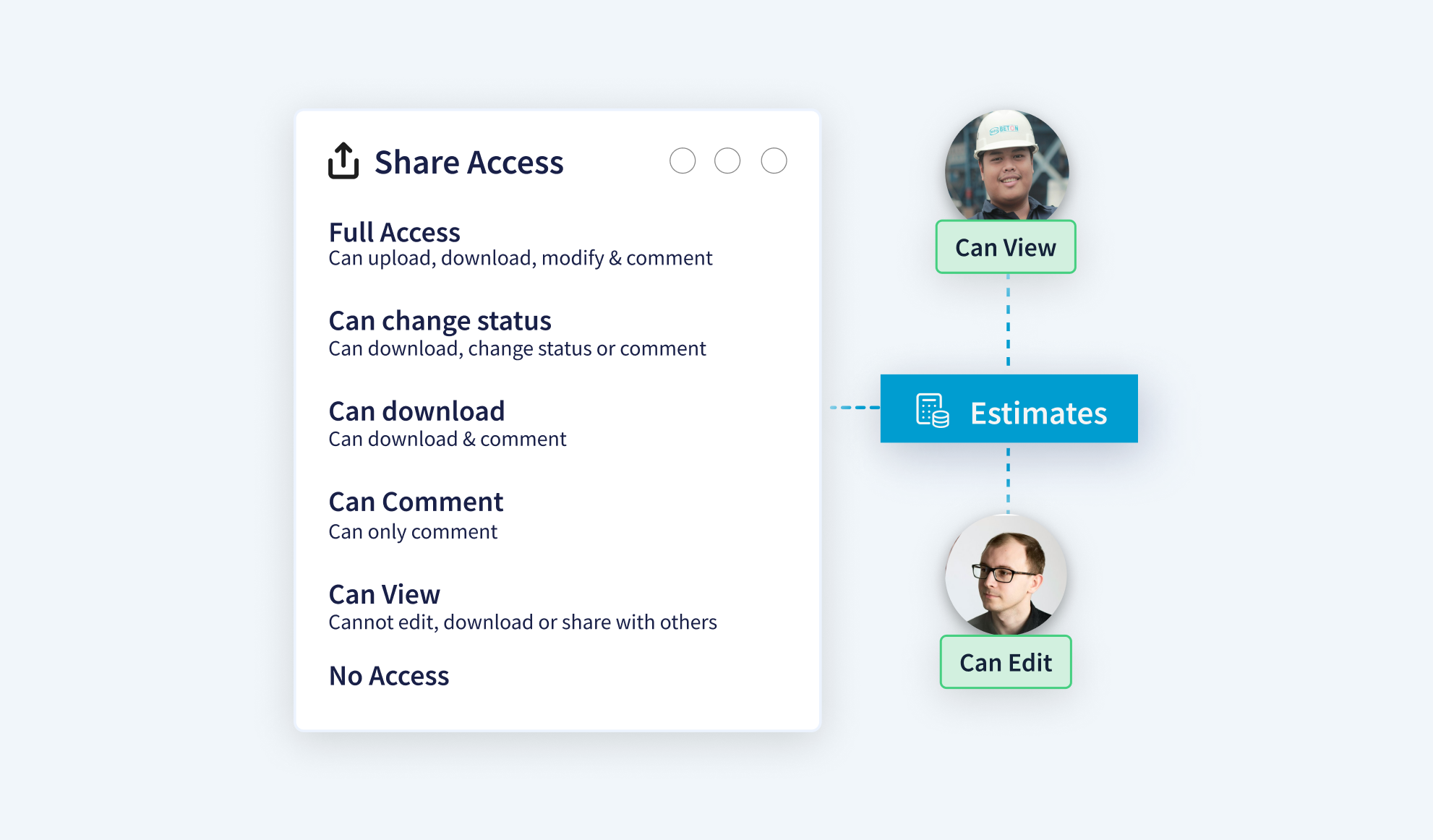
Seamless Multi-Stakeholder Collaboration
BIM brings project owners, architects, engineers, and contractors together on one unified platform.
CUBE enables real-time collaboration from commenting and annotating to tagging team members on documents thus keeping everyone aligned and significantly reducing rework.
CUBE keeps users in the loop with real-time notifications for document uploads, reviews, and deadline reminders. The activity dashboard provides a transparent view of what’s happening, ensuring no task slips through the cracks.
Teams of all sizes can benefit from streamlined coordination on CUBE by consolidating all project communication and information exchange. Explore how exchanging data through Transmittals and unifying correspondences with CUBE’s Mailbox can bolster collaboration.
Practical Applications Across AECO Teams
When AECO teams adopt BIM-backed workflows and integrated CDE platforms, the results are tangible:
- Improved communication and faster decision: making: 65% of construction professionals report that using digital collaboration tools, including BIM-integrated platforms, significantly reduces delays and improves coordination across teams.
-Dodge Data & Analytics: Connected Construction: The Key to Unlocking Productivity ¹
- Enhanced document control and data accuracy: 63% of firms report improved document management and data accuracy with BIM adoption.
-NBS: National BIM Report 2019²
- Improved team alignment and productivity: BIM adoption leads to a 15% average productivity improvement by enabling better collaboration and fewer errors.
-McKinsey & Company: Imagining Construction’s Digital Future³
.png)
Why Choose CUBE?
CUBE isn’t just another construction tech tool. It’s a platform built by AECO professionals, for AECO professionals, with BIM at its core.
Here’s why leading firms choose CUBE:
- Designed for field and office coordination
- Enterprise-grade security and ISO compliance
- Cloud-native and mobile-friendly
- Real-time insights and analytics
- Trusted by top infrastructure, real estate, and industrial players
.png)
Whether you're managing 10 documents or 10 million, CUBE makes it simple, traceable, and future-ready. Explore how industry leaders wield CUBE.
Construction documentation is no longer just about files, it’s about flow, accuracy, and access. With BIM at the heart of document management, AECO teams can coordinate better, respond faster, and deliver smarter.
Platforms like CUBE unlock this potential, giving you control over your data, your documents, and your delivery. Experience the impact firsthand request a demo and see how CUBE transforms your document workflows from day one.
.svg)


.png)
.png)



.png)









.svg)
















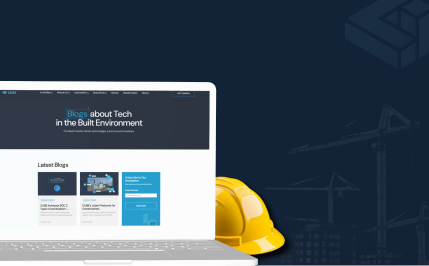


.png)
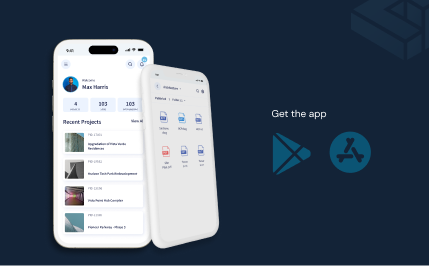

.png)




.png)
.png)